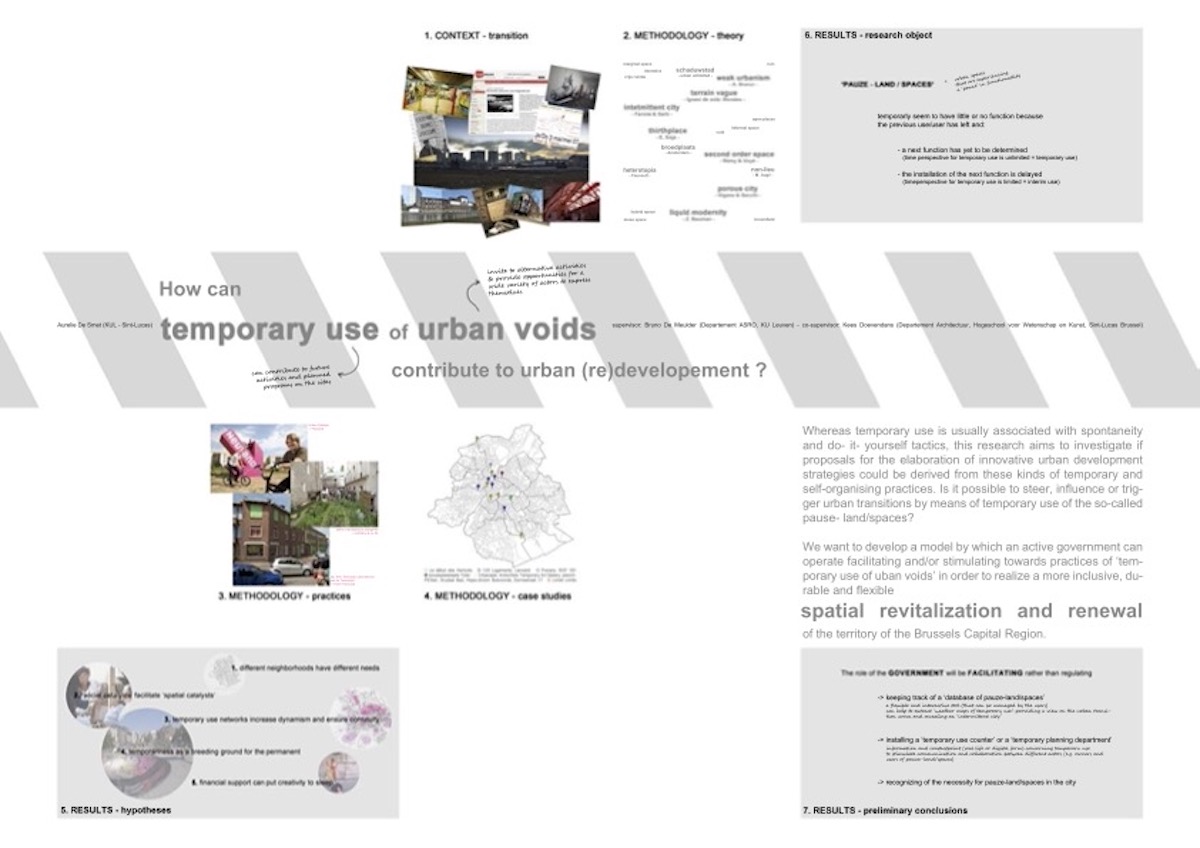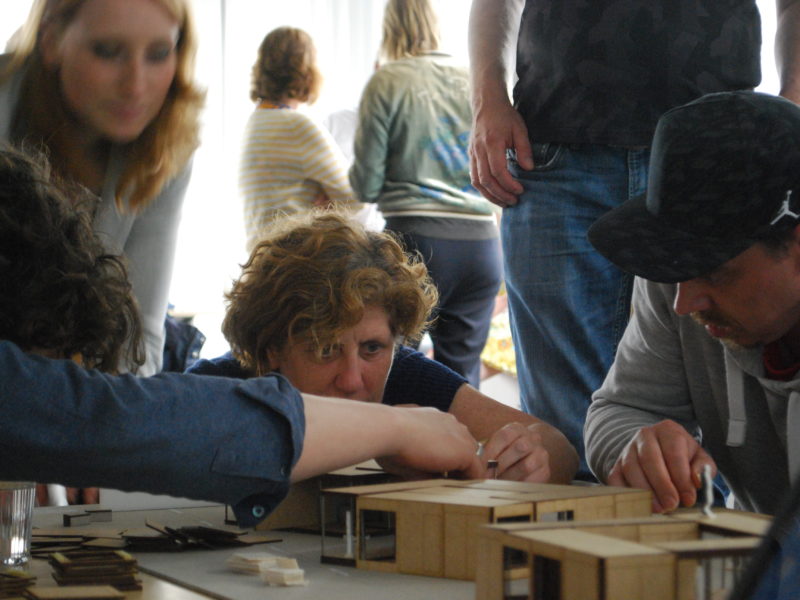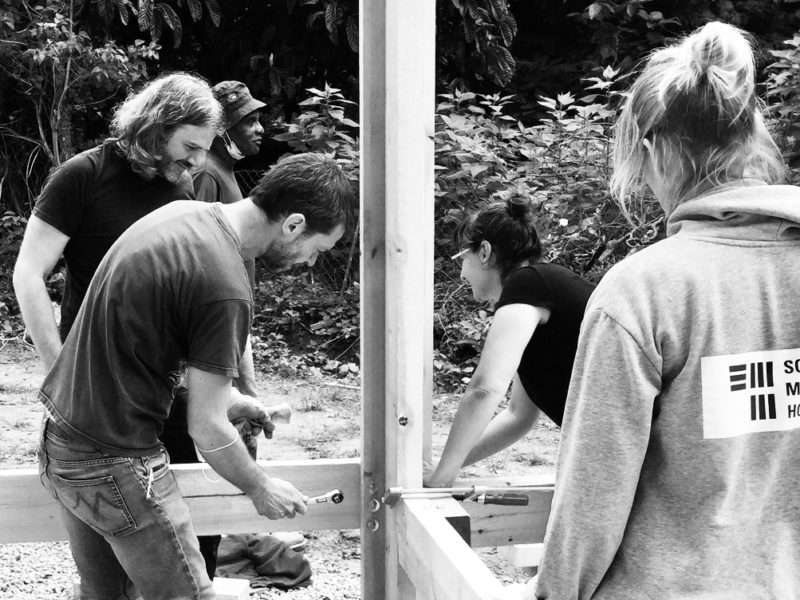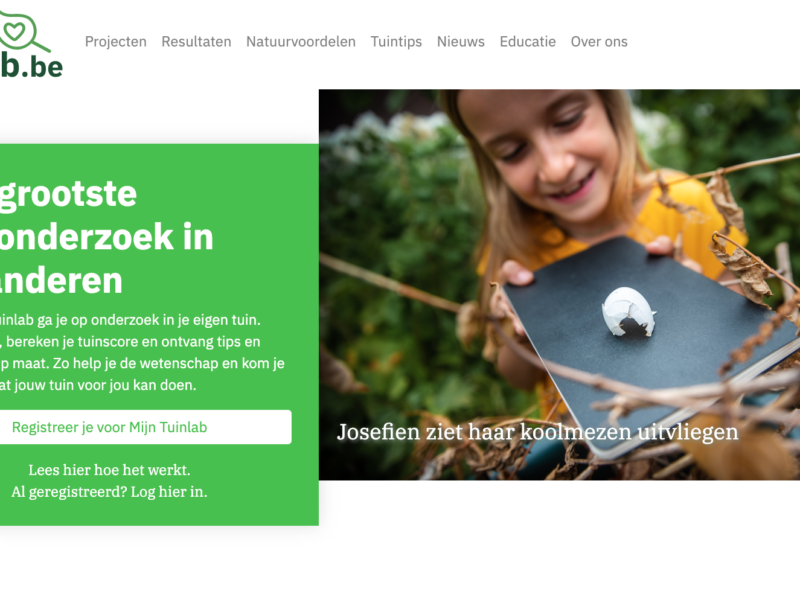In this research project, supported by the Innoviris Prospective Research for Brussels program, I investigated the role of temporary use of voids in urban (re)development.
Due to socio-economic development processes, the space surrounding us is constantly subject to changes. In (and around) the cities social changes are, however, often confronted with the inertness of the built environment. This can result in ‘interruptions’ in the continuity of the urban fabric, as can be experienced in places of conflict or decay. Adapting and re-appropriating such places takes time. As a result, most urban environments will permanently be confronted with a number of sites that are ‘in transition’. Such spaces seem useless, and therefore also worthless, from the point of view of the traditional spatial cycle. As a result, they often end up, in some kind of in-between, a pause in their functionality. This study concentrated on these kinds of spaces, which we refer to as ‘waiting spaces’.
Waiting spaces can be both public and private, large or small scale and built or unbuilt. However, they all have in common that they were abandoned by the previous use(r)s and that a future function has yet to be determined or is delayed for one reason or another (e.g. due to ongoing planning processes, financial complications,…).
Earlier studies – such as the ‘Urban Catalyst’ project (Overmeyer, 2007) – show that (temporarily) vacant spaces in the urban fabric can invite spontaneous and alternative activities and thus create opportunities for a wider variety of users to express themselves and contribute to urban life. In anticipation of redevelopment and planned use, these ‘voids’ therefore appear to offer numerous opportunities and possibilities for alternative users. In addition, however, such activities can also make an important contribution to the future development of these sites (Overmeyer, 2007).
While temporary use is usually associated with free interpretation and self-organization, in this project we investigated if and how proposals for innovative urban planning strategies can be derived from this. And whether it is possible to consciously use temporary use of waiting spaces as a strategy to steer, influence or initiate urban transformations.
The research used a combination of theoretical and empirical research methods. On the one hand, a literature study on the characteristics, meanings and potentials of vacant city spaces is combined with the study of a number of emerging urban (re)development practices arising from a (socially) engaged activist field (such as CityMine(d) in Brussels, aaa in Paris, Laboratorium van de Tussentijd in the Netherlands, Stalker in Italy and Supertanker in Copenhagen). On the other hand, we focused on concrete examples of temporary use in the Brussels-Capital Region. In this context, we investigated the determining factors, identified the actors involved and researched the impact on the environment of these cases.
Type of project:
Prospective Research for Brussels (supported by Innoviris)
Location:
Brussels-Capital Region
Date:
2009-2014
Supervisors:
Prof. dr. Kees Doevendans (Sint-Lucas & TU/e) (supervisor)
Prof. dr. Bruno De Meulder (ASRO, KU Leuven) (co-supervisor)
Role:
project initiator, lead researcher



